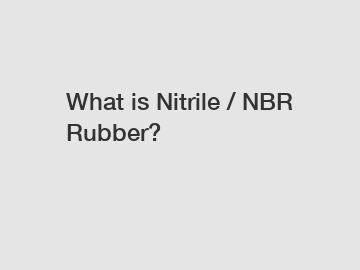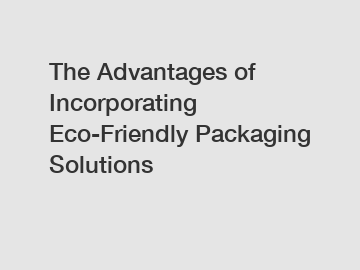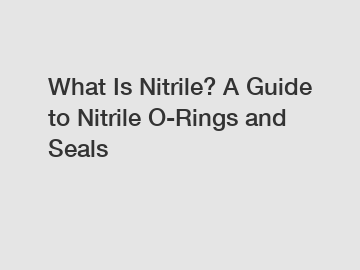Common Conveyor Belt Problems
Common Conveyor Belt Problems
Conveyor Belt Maintenance & Common Conveyor Belt Problems
You can find more information on our web, so please take a look.
If your conveyor belt isn't working properly, it will have untold ramifications throughout your entire system. Entire operations can be thrown off schedule, resulting in loss of both money and productivity.
To prevent this from happening, you need to keep a close eye on the precise workings of your conveyor belts. By carefully watching and checking up on your belts, you can catch many problems before they develop into larger issues that take time and money to fix.
No matter how careful you are, mistakes still happen, and parts and equipment eventually break down. When this inevitably happens, it's important to know how to fix complications as they arise.
It's crucial for you to understand how to complete conveyor belt maintenance as well as what some of the more common conveyor belt problems are and how to fix them. This information will help you keep your conveyor belts running smoothly and stop them from breaking down due to preventable issues.
Common Conveyor Belt Problems
While it is impossible to compile a list of every bad situation you will ever encounter with your conveyor belt, this is a list of some of the concerns you are most likely to face, as well as their probable consequences.
In addtion to learning more about the most common conveyor belt issues, learn:
1. Conveyor Belt Mistracking
This issue occurs when there is a conveyor belt tracking problem. Tracking is the process of managing and aligning the belt onto the correct path, and it's critical to ensuring the smooth functioning and output of your system. Mistracking, then, is when something goes wrong along this track. In most cases, it means that the belt has slipped to one side or another, and the entire system has shifted out of alignment.
Mistracking leads to numerous negative consequences. It has the potential to throw the entire system off its specified course. But the consequences can also be less extreme than this. Mistracking might simply lead to uneven belt wear, which is the cause of a whole host of other problems in its own right.
If the belt slips entirely off the track, the whole system could begin malfunctioning and shut down. It's best to keep an eye out for small signs of mistracking, even if they don't seem to be causing much damage. By catching this problem early on, you can prevent it from worsening and creating a larger issue.
Conveyor Belt Tracking Troubleshooting
When your belt starts tracking from side to side and experiencing frayed edges, you need to do a little conveyor belt alignment troubleshooting. Conveyor tracking problems can originate from various parts of your system. As soon as your belt starts mistracking, take a look at these potential problems:
- Conveyor frame: If your conveyor frame is crooked or slanted, it could be misguiding your belt. Check your framework from all angles to ensure the frame is level and square.
- Snub rollers: These rollers create more tension in your belt and make contact with every pulley in the system. Tenison is crucial to tracking, so your snub rollers should align with your frame and apply enough tension to the belt.
- Belt cutting:Conveyor belts can be cut incorrectly during manufacturing, making them crooked. No matter how well the rest of your system runs, a crooked belt will cause tracking errors.
- Cleanliness: Buildup on the belt and pulleys can cause the belt to sway one way or another. Make sure all parts of your conveyor are clean to ensure a smooth run and prevent failure.
- False crowns: Conveyor belts move a variety of items, and sometimes the material can snag or get stuck on a pulley. You can find crowns on the center of your end pulleys that distribute force to each side of the belt and help it stay on track. If a piece of debris gets lodged in another pulley, it can create a fake crown and redistribute weight where you don't need it. Check to see if your pulleys are clear of debris to avoid this.
2. Belt Slipping
Conveyor belts rely on a precise balance of tension to work correctly. If there is too much tension or too little, things begin to go awry, and the belt can slip. Specifically, if the head pulley breaks down or even becomes overly worn, there will no longer be enough tension to keep the belt from slipping around.
This loss of tension can result in unnecessary stretching and strain on the belt, as well as loud, grating and squealing noises and the aforementioned slipping. It will require time-consuming maintenance to fix such a problem as this. To avoid this situation, check all parts and pieces of the conveyor belt regularly to ensure that they aren't experiencing any undue wear and tear.
Top Causes of Conveyor Belt Slippage
Since tension and balance play massive roles in belt operation and traction, there are a few common causes of belt slippage. Once you're aware of the potential causes, you can keep an eye on problem areas to prevent slippage in the future. Common causes include:
- Overweight load.Your conveyor belt can only handle so much weight based on its pulleys and overall size. If you've tried to carry something that's exceedingly heavy, your belt will typically slip off the pulleys instead of operating normally. Make sure the objects you're using on your belt fit the belt's weight range.
- Low temperatures.If you're working in colder conditions than usual, it could affect the traction of your conveyor belt. Colder temperatures can reduce the grip between the belt and pulley, causing the belt to slip. If you regularly work in cold environments, choose a belt designed to withstand low temperatures.
- Poorly installed lagging. While incorrect belt tension results from a variety of problems, lagging typically fixes those issues. Lagging is applied to the pulleys to improve grip with the belt, but if this lagging is improperly installed, you may still experience slippage. If you're not sure how to install pulley lagging yourself, consult a professional.
- Pulley problems. Pulleys are a common source of tension issues. Worn heads or pulleys with buildup can reduce the belt's grip, as can a pulley that's too smooth. The best way to prevent pulley problems is to actively check them for signs of wear.
When your conveyor belt constantly slips, it disrupts your daily operation and productivity. If you stay aware of the potential causes, you can prevent them before they happen. It's helpful to regularly inspect your machine, especially the pulleys as they often contribute to belt slippage.
3. Seized Rollers
In most cases, conveyor belts are constructed from metallic materials such as steel. This construction is good because it means the parts are usually highly durable and long-lasting. However, it also means that when the rollers on the conveyor belt seize up, they have an unfortunate tendency to develop sharp edges.
These sharp edges, in turn, can have major repercussions throughout the conveyor system. They can cause the belt to mistrack unequally down the center line of the conveyor belt. This circumstance is an issue for several reasons. Firstly, it can pose a significant safety hazard to any workers in proximity to the conveyor belt. Secondly, it has the potential to damage goods and materials being transported along the conveyor belt, sometimes beyond repair.
If the problem is severe enough that the entire system malfunctions and shuts down, you will most likely be looking at a long shut-down period while the system is repaired. Check the rollers frequently to prevent this scenario.
4. Blockages
The primary purpose of any conveyor belt system is to transport items efficiently from one location to another, often through a complex conveyor system. It only makes sense, then, that when this efficient travel is disrupted, the entire system stops working.
It's all too easy for a package to get caught. When this happens, the next item behind the first one gets caught, and the pileup simply builds from there. It can lead to the entire system becoming clogged and jammed.
While random occurrences are hard to predict and often impossible to prevent, you can do a great deal to stop preventable blockages. Check your conveyor belts carefully for any sharp edges, surfaces, corners or other spaces that might snag items as they go past. Remember that even if something looks like it's not a big deal now, it's always better to deal with it while it's still small. Otherwise, it might soon become a much larger complication.
5. Material Carryback
While blockages are a result of packages getting caught on sharp edges and blocking the other products, material carryback involves a buildup of material on the belt itself. If you're working with materials such as clays or mineral ores, they can leave small amounts of residue behind. While it may not seem like much, this material will increase and lead to accumulation underneath your belt, causing problems with your rollers and pulleys.
This carryback can also cause safety issues down the road because excessive material buildup can be a fire hazard, and certain materials can be dangerous if frequently inhaled. There's also a profit loss associated with carryback. If you're working with high-profile materials and losing a little bit of them every time they're on the belt, you could lose a significant profit.
To reduce material carryback, you should install a cleaning system that will scrape your belt to ensure no material gets left behind.
6. Material Spillage
It's fairly common for there to be some issues with material spillage at some point along a conveyor system. This term refers to any material that accidentally slides or spills off the belt, and it's most common along transfer and load points. This occurrence isn't necessarily due to any mechanical failures or problems with the belt, but it can still be an issue, as this spilled material can lead to blockages or buildups that will have a domino effect and cause other problems later on.
If you find that material spillage is a common factor on your conveyor belt, try installing impact beds, skirt clamps or a belt plough. These solutions will help reduce wasted material as well as time spent cleaning up, and they'll decrease the possibility of breakdowns caused by blockages on the belt.
7. Belt Tears and Seam Rips
Depending on the product you're moving, you might experience perforations or tears in your belt. Moving products such as sharp rocks or coal increases the chances of this occurrence. Even excessive friction from moving heavy packages can result in thin spots that eventually lead to tears. Seam rips also happen over time with stress and tension on the belt. Tears and rips can be hard to prevent with the nature of your operation, so this problem requires a good repair process.
A torn belt or ripped seam can cause problems with the function of your belt and hurt productivity. It's important to either contact a professional or have a trained member of your team perform these repairs to reduce downtime.
How to Fix a Conveyor Belt Tear
There is a broad range of solutions for conveyor belt problems that you can consider to make repairs. These repairs depend on the belt's material, your industry and how much space your operation has.
The three methods of conveyor belt seam repair are:
- Vulcanization: This process uses pressure and heat to fix tears in your belt. It's the most reliable repair method, and it applies to both thermoset rubber and thermoplastic belts.
- Metal fasteners:This repair method is the most common do-it-yourself option because it's quick and easy. By using metal fasteners, you can essentially stitch your belt together. While this is a quick fix, it's not as reliable and will not last as long as vulcanization. Fasteners also pose a risk of falling off and joining your product line, so it's particularly unsafe for the food industry. Use this method as a backup option or a temporary fix before vulcanization.
- Cold curing:This method is also known as cold vulcanization, and it's often used for gouges or scoring on your belt. It involves a cement made with a base compound and curing agent, and it's applied like a paste. This repair type is typically used when an operation has space constraints and can't accommodate regular vulcanization equipment.
How to Prevent Problems With Your Conveyor Belts
The best way to keep your conveyor system running smoothly is always to prevent problems before they happen. This plan requires constant vigilance, and it calls for you to regularly check your system for anything incurring excessive wear, or any elements slightly out of the ordinary.
'
Here are a few of the most important things you can do to keep your system running smoothly.
- Check for Buildups
- Clean Your System Regularly
- Make sure the Frame is Square and Level
- Make Sure the End Pulleys are Even
- Check That the Belt is Cut Straight
- Keep the Idlers Running Smoothly
- Replace Any Worn Parts
1. Check for Buildups
As part of the regular checkups you perform on your conveyor belt, you should complete a routine cleanliness check. Carefully look over your entire system from top to bottom, side to side and every way you can think of. Look for buildups of dirt, debris or residue of any kind. Wherever you find these types of buildup, remove them as thoroughly as possible.
Debris is a common cause of mistracking. It can cause the belt to become aligned incorrectly, and it can also be responsible for blockages in your system.
2. Clean Your System Regularly
This process goes hand in hand with checking for buildups. However, if you clean regularly, you reduce the possibility of allowing buildups to happen in the first place. Make a regular habit of cleaning your conveyor system. You'll be more likely to catch issues early on and prevent any problems that would arise as a result of dirt or excess material buildup.
3. Make Sure the Frame is Square and Level
It's hard for your conveyor to run properly if the entire system is tilted at an unusual angle or thrown out of alignment, which can happen just from the regular motion of the machine as well any number of other factors. It may have even occurred when the system was being readjusted for transporting a different product or material.
It's essential to check regularly to make sure the conveyor frame is squared up neatly and everything is lined up correctly. You can easily confirm by using a standard level and checking to make sure that both sides are even.
4. Make Sure the End Pulleys Are Even
Pulleys are easy to check at the same time that you're already investigating whether the frame is square. Verify that each pulley in the system is evenly lined up with the conveyor frame. If these pulleys are off, this could lead to bigger problems with the belt slipping and parts wearing down more quickly.
5. Check That the Belt Is Cut Straight
This feature isn't necessarily something you need to check every time you perform maintenance since looking at it once will get the job done. However, it's still crucial to perform this analysis. While ideally, every belt is cut and formed perfectly, it's not impossible that you may have gotten a defective belt that simply isn't cut straight. If you didn't know about this defect, it could be wreaking all kinds of havoc in your conveyor system through mistracking.
Additional reading:Polyurethane vs Rubber Hose- Which one to choose?
Cleaner Salt Brine Manufacturing
The Ultimate Guide to Choosing Metal Corrugated Compensator
How To Choose The Right/best Hydraulic Hose Manufacturer
Exploring the Diversity of Rubber Stoppers in Pharmaceuticals
Revolutionizing Safety: Is Chemical Rubber Hose Essential?
What are the benefits of PTFE lined hoses?
haichuan contains other products and information you need, so please check it out.
To check whether or not your belt is straight, try this. Remove the belt from the conveyor frame and lay it out flat on the floor. If the belt arcs or curves in any way, it isn't straight, and it will need to be replaced.
6. Keep the Idlers Running Smoothly
The conveyor belt's return idlers can become dirty, frozen or incorrectly aligned over time due to improper installation or natural wear, tear and motion. These parts should be cleaned regularly, and their alignment should be checked.
If your idlers freeze or stop working in any way, it could have various ramifications for your system. It could lead to your belt wearing out faster than usual and needing to be replaced, among other possibilities. To avoid this situation, simply check the idlers regularly for any problems, cleaning them as they become dirty and replacing them as they begin to wear out.
7. Replace Any Worn Parts
This advice should go without saying, but it's so important that it's worth drawing special attention to. If any single part of your conveyor system begins to wear down, it needs to be replaced. If it is allowed to continue breaking down without replacement, it will put added strain on the other parts as they work to carry the extra load that the damaged part is unable to. This situation results in the rest of your system breaking down more quickly or malfunctioning and needing to be shut down altogether.
There are many reasons a part could break down. It could be that there was excessive buildup destroying the material or that the part was never installed correctly and it was experiencing excessive strain. Or it could simply be that the part has grown old and is naturally breaking down with time. Whatever the case, it's important to replace it now before it causes damage to the rest of the system.
Tips for Conveyor Maintenance
Belt maintenance is crucial for an efficient product line. If you actively check your conveyor belt's activity and prepare to handle problems, your operation will run smoothly. Keep these maintenance tips in mind when caring for your conveyor belt:
Prepare for Emergency Repairs
This is valuable for belts that you actively use throughout the day. Have a plan for emergency repairs by stocking equipment such as cold-curing supplies or metal fasteners so you can repair rips quickly. It's also wise to have a plan of action for production. Will you stop that line completely, or can you move it elsewhere while you make repairs?
Stock Spare Parts
You should also keep a stock of spare parts. Things such as sprockets, motors and belts will need to be replaced over time. Keep them available if any part failure should arise.
Track Your Belt's Lifespan
How long do your conveyor belts typically last with your type of production? If you have a belt that doesn't meet that standard lifespan, it could indicate a manufacturing error or even poor maintenance and care. If you know how long a belt lasts, you can make sure you're actively caring for it to support that lifespan.
Use Preventive Maintenance
The best way to avoid a severe malfunctioning error is to follow the steps listed above. Following these tips can improve your conveyor belt's lifespan and help you avoid bigger problems, ultimately making your line more productive.
Keep Documentation
Make a note of any repairs you perform, and write down the state of your parts regularly in a conveyor belt plan. If a more significant problem comes up, you could access these notes to see repairs you've made in the past, and if the state of your belt showed failure over time.
Start a Conveyor Belt Maintenance Schedule With a Technician
As much as preventive maintenance is a good practice, working with a professional technician for belt maintenance services guarantees that the bigger repairs will be done correctly. Set up regular maintenance with a professional so they can fill in the gaps of your actions.
Safety and Conveyor Maintenance
While not as inherently dangerous as many other pieces of heavy machinery and equipment, conveyors are still capable of serious damage if the correct safety measures aren't taken. If you or any of your team members are about to start maintenance work, take note of these key safety precautions before you begin.
- Turn the Conveyor Off
- Don't Take on More Than You Can Handle
- Contact Professionals if More Help is Needed
1. Turn the Conveyor Off
This point cannot be stressed enough. Do not perform maintenance on the conveyor system while it is in use. Doing so would be a good way to get a finger crushed or broken if your fingers happen to get caught in the machinery. Even more dangerous is the electrical current powering the conveyor belt. To avoid problems with dangers such as these, take extra precautions. Be safe and make sure everything is shut off before you begin maintenance.
2. Don't Take on More Than You Can Handle
The amount of electricity needed to power a conveyor system is nothing to take lightly. That kind of power can cause serious damage, especially if you're inexperienced and aren't especially sure what you're doing. If you begin to suspect that the problem with your conveyor belt is much more involved than anything we've covered here, take a step back. It may be time to call in a professional maintenance team. While this may seem like an extra hassle, it's always better to be safe than to end up seriously damaging your system or endangering yourself or an employee.
Contact Professionals for Help With Your Conveyor Belt
If you find yourself in over your head with repairing or maintaining your conveyor belt, sometimes the best thing you can do is to call a professional who is equipped with the correct conveyor belt maintenance tools.
The employees at SEMCOR are extremely knowledgeable and highly qualified to help you troubleshoot whatever problem you may be facing. If some of your parts are wearing out and need replacing, we can work with you to help you determine the correct part that will get your system back up and running again. On top of that, our service professionals are available 24/7 so that no matter what time your system has an emergency, you will have someone to turn to for help.
While we are located in St. Louis, Missouri, we also serve Illinois, Indiana, Kentucky, Iowa and Kansas. We value operations having access to conveyor belt products and services, so we serve as many areas as possible. We're ready to provide you with our top-of-the-line products and services anytime you need. Contact us online today to request a quote, or call us at 314-371-.
Conveyor belt fabric All you need to know
Conveyor belt fabric All you need to know
PVC canvas for conveyor belt
1. Prevent mold;
2. Prevent outdoor aging and discoloration (UV and UV resistance);
3. Good weldability and very durable coating;
4. Excellent ductility;
5. Strong tearing and peeling resistance;
6. We can also meet the flame retardant standards B1 and M1;
7. Tear strength treatment of special reinforcement materials based on fabrics;
8. Acrylic surface coating, etc;
9. Podemos European Environmental Standard 6P;
10. PVC conveyor belt has good elasticity and is not easy to deform;
11.The formula design of PVC conveyor belt products is reasonable, in line with health indicators, with moderate color, light and durable.
Shanghai Derflex Material Co., Ltd. is a company specializing in the production of PVC coated canvas, with more than 20 years of experience.
The product range is very rich, which can be applied to all areas of life to meet the needs of different customers.
technical parameter
Derflex's product is PVC canvas for conveyor belt, which has the following characteristics:
1. Prevent mold;
2. Prevent outdoor aging and discoloration (UV and UV resistance);
3. Good weldability and very durable coating;
4. Excellent ductility;
5. Strong tearing and peeling resistance;
6. We can also meet the flame retardant standards B1 and M1;
7. Tear strength treatment of special reinforcement materials based on fabrics;
8. Acrylic surface coating, etc;
9. Podemos European Environmental Standard 6P;
10. PVC conveyor belt has good elasticity and is not easy to deform;
12.The formula design of PVC conveyor belt products is reasonable, in line with health indicators, with moderate color, light and durable.
The last test report was Derflex DG based on 650 g/m2 PVC coated canvas.
Tent canvas: quality test
DER will conduct product quality test on all products before each delivery.
Features of Derflex shop fabric lined canvas:
1. Laminating technology, hot-melt coating and blade coating technology
2. Special welding tear strength
3. Flame retardance (optional), B1; M1'
4. Temperature resistance: - 20 - 70
5. Cold crack resistance, mildew resistance, anti-static treatment, waterproof
6. UV treatment. (Optional)
7. Acrylic treatment (optional).
Why Derflex? Production capacity and price experience of PVC canvas in China
Derflex is a professional manufacturer of PVC coated glass fiber materials in China, with more than 20 years of experience.
Derflex has: 50 knitting and sewing machines for making fabrics;
4 PVC coating machines;
400-500 workers produce 24 hours (2 Vincejos)
15 engineers study new products and technologies to meet customer requirements
As a company with PVC material experience, DER has expanded its marketing to all parts of the world by participating in different types of exhibitions such as IFAI, SGIA, TechTextill and China Sign. We now have many customers from the United Kingdom, Russia, European countries, North American countries, such as the United States, Canada, South America, such as Mexico, Argentina, Spain, Africa, such as South Africa, Kenya, Nigeria, Tanzania and other countries in the world.
DER's goal is to become the most famous Chinese advertising supplier in the world. We need your business support.
service
Samples: provide free samples on the customer's DHL account.
Quality assurance: any quality problem within the quality assurance period will be solved immediately after feedback.
Professional international sales team: 7 * 24 hours online service. Any questions will be answered within 24 hours.
Freight: long-term cooperation with domestic and international transportation agents to ensure the delivery of products to the former.
Terms of payment: customers with long-term and stable cooperation will be supported by certain payment methods.
For more information, please feel free to contact us
:
:
Are you interested in learning more about Canvas Conveyor Belt Material? Contact us today to secure an expert consultation!
Which dredging hoses are best for durability?
How does bulk wear resistance hose work?
Ultimate Guide to Understanding Compensator Functionality
What are the top wear-resistant hose options?
Why Choose ODM Helical Metal Hose Exporter?
How do I select a large diameter rubber hose?
How to Choose the Right Polypropylene Industrial Yarn?











